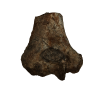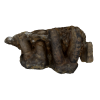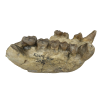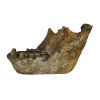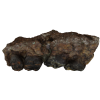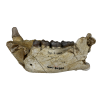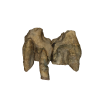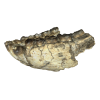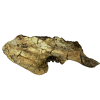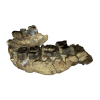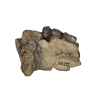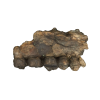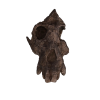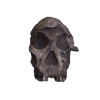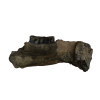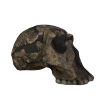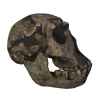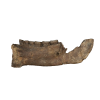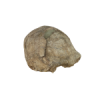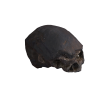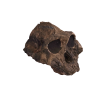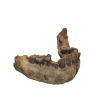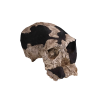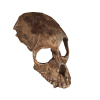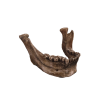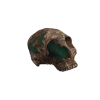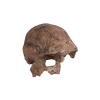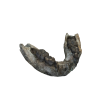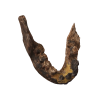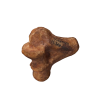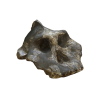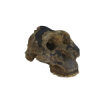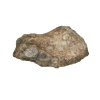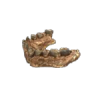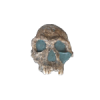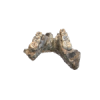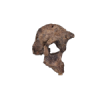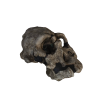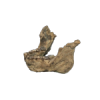While working on the KNMER 820 hominid screening near Ileret, on the east side of Lake Turkana, members of the Koobi Fora Research Project were startled by the sound of a bullet whistling past their heads. They immediately ran for cover in some nearby bush, half way up a hillside and waited until the local tribesman who had fired the shot moved on. While they were anxiously waiting they spotted this lower jaw close to where they were crouched. They would not have looked in this unlikely patch of thorn had it not been for this unexpected incident. This lower jaw was designated as the type specimen of Homo ergaster by Colin Groves in 1975. Groves believed that the African specimens of Homo erectus differed from specimens of Homo erectus from Asia. Hence, Homo erectus in Africa is sometimes referred to as Homo ergaster. However, new specimens from both Kenya and Ethiopia have shown that there are no consistent differences between these two species and today the fossils of Homo ergaster are more generally all referred to as Homo erectus.
|
Homo erectus
KNMER 992 b Age approx. 1.70 Million Years
Digital Capture: Laser Scan 0 Comments Order: Primates Family: Hominidae Tribe: Hominini Genus: Homo Species: erectus Element: Left mandible Locality: Ileret,East Turkana Year of Discovery: 1971 Other Fossils to View |



